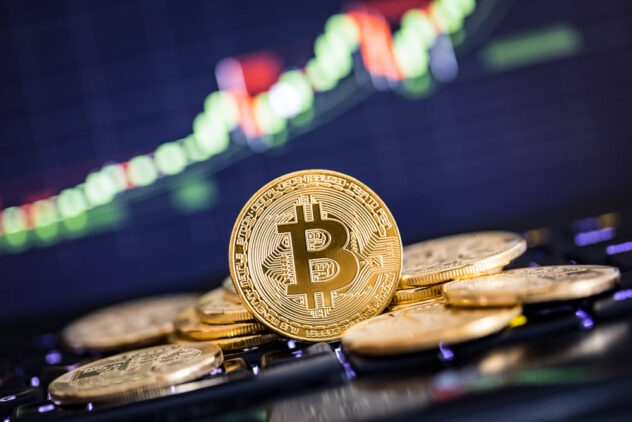Is Cryptocurrency Still a Viable Asset Class?
Cryptocurrencies have come a long way since their inception in the noughties, both in terms of growth and how they’re perceived by potential adopters and investors. However, is cryptocurrency a viable asset class?

Crypto endured a sustained slump through 2022, after the wider market peaked during the previous November and achieved a cumulative market cap value of more than $3 trillion.
As of June 5th, 2023, the market’s total capitalisation value is just $1.13 trillion, as the crypto space struggles manfully to return to its former glories despite a relatively positive and stable first half of the New Year,
But where exactly does cryptocurrency start as a viable asset class, and is it still worth including in your portfolio?
The Current Crypto Market at a Glance
Despite the historical data revealing exactly how far crypto has fallen since the halcyon days of November, 2022, this year has actually started on a fresh and relatively positive note for tokens.
At the very least, most tokens (including market leaders like Bitcoin and Ethereum) are on the arduous road to recovery, with the price of BTC alone up to £21,614.34 at the beginning of June. It ended last year priced as low as £13,915.20, and its sustained gains auger well for the remainder of the market in 2023.
This trend is expected to continue through the remainder of the year, as BTC and ETH continue to record incremental growth and blaze a trail for second and third generation cryptos to follow.
In terms of third gen crypto assets, there are a handful of tokens that are expected to perform particularly well in the second half of 2023. These include Cardano, which continues in its quest to tackle the scalability issues associated with first and second generation tokens and leverages a proof-of-stake consensus mechanism that dramatically increases transaction times and lowers fees.
Cardano is largely considered to be the market leading third generation crypto, thanks to both the strength of its core premise and the strong development team that underpins it.
More specifically, Cardano’s team is led by Charles Hoskinson, who’s also the co-founder of Ethereum and someone who has almost immeasurable experience in the industry. This is enabling Cardano to create a vast and decentralised ecosystem, in which users can build a wealth of scalable applications and create further utility in the marketplace.
RenQ Finance is also poised to grow impressively through H2 2023, as while this third-gen cryptocurrency is a relatively new player in the burgeoning DeFi space, it’s a highly innovative blockchain that offers a broad range of services (including staking, liquidity provision and yield farming) while enabling interoperability across different blockchains.
The key takeaway here is that the crypto market as a whole is witnessing a sustained, if modest, recovery in 2023, although the precise extent of this rebound and the value that it offers to investors remains up for debate.
Is Cryptocurrency Still a Viable Asset Class?
While the medium and long-term future of cryptocurrency appears relatively rosy, this market is clearly not as attractive to investors as it once was.
At the same time, it’s hard to dispute the notion that trust in the crypto market has declined since the 2022 crash, while the potential upside for tokens and the chances of achieving short-term gains remain minimal.
However, it can also be argued that last year’s sustained market crash has created opportunities for traders, especially those with a penchant for so-called “value investing”.
This describes a methodology where you proactively select assets (typically stocks) that appear to be trading noticeably lower than their intrinsic or ‘book’ value, and while this can be hard to gauge accurately for crypto tokens, it’s undoubtedly worth consideration if you’re looking to crack this market in 2023.
In the case of Cardano, for example, this highly scalable asset is now priced as low as £0.30, which is significantly down from its high of £2.07 in August 2021. Now, while the asset may not achieve such a high again until some point in 2026, it could reach $1.43 at some point in 2025.
This could result in a significant medium-term yield when investing in volume, while it also highlights a trend that’s prevalent across a broad range of market leading third generation blockchains in 2023.
Ultimately, the diversity of the contemporary crypto market and the fact that it has least embarked on the road to recovery means that it remains a viable investment option at present, especially for those of you with a desire to achieve medium or long-term gains.
The Last Word
Crypto clearly remains a theoretically viable option and one that has been relatively stable through 2023, while the low price of Bitcoin and similar tokens increases their respective value propositions in a recovering market.
At the same time, the global macroeconomic climate remains strained, with inflation still disproportionately high and interest rates rising. High rates of inflation continue to erode the purchasing power and underlying value of fiat currencies, while crypto tokens remain relatively immune to macroeconomic fluctuations.
However, tokens such as Bitcoin remain more than 50% down on their historic high price, while the asset’s immediate resistance level is relatively low and indicative of a bearish market. So, those of you with a level of risk aversion or desire to achieve short-term gains may want to avoid crypto, at least for the foreseeable future.
To learn more about which investment market or asset class is right for you, I’d also recommend taking this insightful trading quiz.This is ideal if you’re a novice trader, for whom assets such as cryptocurrency remain incredibly complex and intimidating.









Leave A Comment